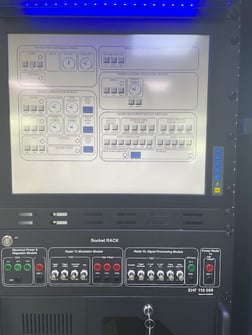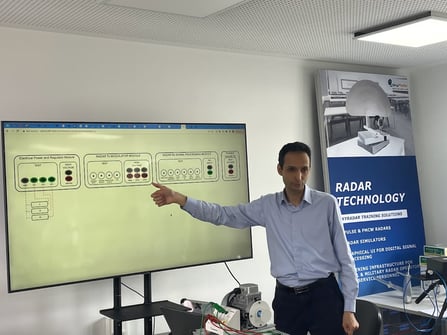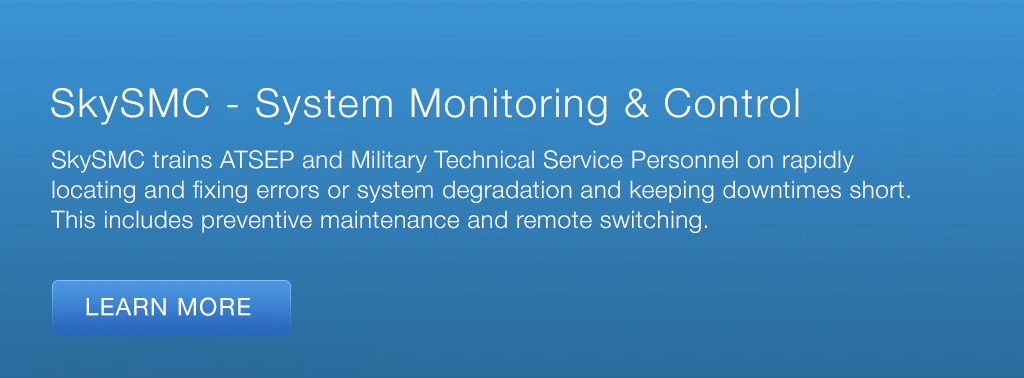In this article we explore receiver interference in ATC: Definitions, examples, impacts, causes, types, incidents, and mitigation strategies.
The smooth and efficient functioning of Air Traffic Control (ATC) services relies heavily on the accurate and reliable detection and tracking of aircraft targets. However, receiver-related interference errors can significantly impact the performance and safety of ATC systems. In this article, we will explore the definition of receiver-related interference errors, provide examples to illustrate their occurrence, and discuss their impact on ATC services. Additionally, we will examine the factors responsible for these errors, common types of receiver-related interference errors, reported aviation incidents, rectification and prevention steps, and highlight key research findings in this area.
Definition of Receiver-Related Interference Error
Receiver-related interference errors refer to the disruptions or disturbances that affect the reception and interpretation of radar signals in ATC systems. These errors can arise from various sources, including external electromagnetic interference, internal system noise, cross-talk between components, or improper system calibration. Receiver-related interference errors can result in false detections, degraded signal quality, or inaccurate target information, which can have severe consequences for ATC operations.
ErrorFactors Responsible for Receiver related Interference Error
Sure, here are the factors responsible for Receiver related Interference Error in heading with details of each:
Radio Transmissions
Radio transmissions from other aircraft, ground stations, or other sources can cause interference with radar signals by creating noise that obscures the actual radar signal. This noise can make it difficult or impossible to distinguish between real and false targets.
Lightning
When lightning strikes, it creates a large electromagnetic pulse that can interfere with radar signals. This interference can cause false targets to appear on radar screens or make it difficult to track real targets.
Solar Flares
Solar flares are large eruptions of energy from the sun that can send a stream of charged particles towards Earth. These charged particles can interfere with radar signals by causing noise or by disrupting the radar signal altogether.
Atmospheric Disturbances
Atmospheric disturbances, such as storms or high winds, can also cause interference with radar signals. These disturbances can cause the radar signal to be reflected or refracted, which can lead to errors in the radar image.
Man-made Interference
Man-made interference, such as from construction or industrial activities, can also cause interference with radar signals. This interference can be caused by radio transmissions, electric motors, or other sources of electromagnetic radiation.It is important to note that Receiver related Interference Error can be caused by a combination of factors. For example, a radar system that is receiving interference from a nearby radio station may also be affected by atmospheric disturbances. It is also important to note that the severity of Receiver related Interference Error can vary depending on the factors that are causing it. For example, a radar system that is receiving interference from a nearby lightning strike may experience more severe RRIE than a radar system that is receiving interference from a nearby radio station.
Some common types of Receiver related Interference Error
Sure, here are some common types of Receiver related Interference Error (RRIE) in heading with details of each:
Noise
Noise is a random signal that can be caused by a variety of factors, including thermal noise, shot noise, and interference from other sources. Noise can make it difficult to distinguish between real and false targets.
Clutter
Clutter is a signal that is not caused by an actual object. Clutter can be caused by a variety of factors, including reflections from the ground, the atmosphere, or other objects. Clutter can make it difficult to see real targets.
Multipath
Multipath is a phenomenon that occurs when a radar signal is reflected off of multiple objects before it reaches the receiver. This can cause the radar signal to be distorted, which can lead to errors in the radar image.
Jamming
Jamming is a deliberate attempt to interfere with radar signals. Jamming can be caused by a variety of sources, including other radar systems, radio transmitters, or other devices that emit electromagnetic radiation. Jamming can make it impossible to use radar effectively.
It is important to note that RRIE can be caused by a combination of factors. For example, a radar system that is receiving interference from a nearby radio station may also be affected by atmospheric disturbances. It is also important to note that the severity of RRIE can vary depending on the factors that are causing it. For example, a radar system that is receiving interference from a nearby lightning strike may experience more severe RRIE than a radar system that is receiving interference from a nearby radio station.
Examples of Receiver-Related Interference Error
External Interference: An example of receiver-related interference error due to external interference is when a nearby communication tower emits strong radio frequency signals that interfere with the radar receiver. This can result in false or ambiguous target detections, leading to incorrect aircraft position information.
Internal System Noise: Internal system noise, such as thermal noise generated by electronic components, can introduce interference errors. For instance, if a radar receiver has faulty amplifiers that produce excessive internal noise, it can degrade the sensitivity of the system, making it challenging to detect targets accurately, especially those with weak radar returns.
Impact of Receiver related Interference Error on Air Traffic Control Services
False Targets
RRIE can cause false targets to appear on radar screens, which can lead to errors in air traffic control decisions. For example, an air traffic controller may mistake a false target for an actual aircraft and issue a clearance for the aircraft to land in the wrong location. This can lead to a mid-air collision.
Loss of Track
RRIE can also cause radar systems to lose track of real targets. This can make it difficult for air traffic controllers to manage the flow of traffic and can lead to delays or cancellations.
Increased workload
RRIE can increase the workload for air traffic controllers. This is because they need to be more vigilant in detecting and dealing with false targets. This can lead to fatigue and errors.
Reduced safety
RRIE can reduce the safety of air traffic control. This is because it can lead to errors in decision-making, loss of track, and increased workload. This can increase the risk of accidents.
It is important to note that the impacts of RRIE can vary depending on the severity of the interference. For example, a small amount of interference may only cause minor errors, while a large amount of interference may cause major disruptions. It is also important to note that the impacts of RRIE can vary depending on the location of the radar system. For example, a radar system that is located near a source of interference, such as a radio station or a lightning strike, is more likely to be affected than a radar system that is located in a remote area.
Impact of Receiver-Related Interference Error on ATC Services
Receiver-related interference errors can have significant impacts on Air Traffic Control (ATC) services, affecting the safety, efficiency, and reliability of operations. The following are some of the key impacts of receiver-related interference errors:
False or Ambiguous Target Detection
Interference errors can result in the generation of false or ambiguous radar returns. This can lead to confusion for ATC operators, making it challenging to accurately identify and track aircraft targets. False targets or unclear radar signals can compromise situational awareness and increase the risk of airspace conflicts or incorrect aircraft identifications.
Degraded Signal Quality
Interference errors can degrade the quality of radar signals received by ATC systems. This can lead to reduced signal strength, increased noise levels, or distorted radar returns. Degraded signal quality hampers the ability to detect and track aircraft accurately, affecting the overall performance of the ATC system.
Increased Workload for ATC Operators
Dealing with interference errors requires additional effort and attention from ATC operators. They must differentiate between genuine aircraft targets and false or degraded radar returns. This increased workload can lead to higher cognitive demands, longer response times, and potential errors in decision-making. The added complexity can put additional strain on ATC personnel, potentially impacting their effectiveness in managing air traffic.
Communication Challenges
Interference errors can also affect the communication links between ATC and aircraft. Radio frequency interference or other forms of interference can disrupt or degrade the transmission of vital information, leading to communication gaps or misunderstandings between ATC and pilots. This can hinder coordination, compromise the flow of air traffic, and impact the overall safety and efficiency of operations.
Reduced System Reliability
Receiver-related interference errors can introduce inconsistencies or uncertainties into the ATC system. The reliability and accuracy of radar data may be compromised, leading to potential disruptions in air traffic management. Inaccurate or unreliable information can undermine the trust in the system and require additional verification or validation measures, further impacting operational efficiency.
Steps to be taken by Air Traffic Safety Electronics Personnel (ATSEP) in the rectification of receiver-related interference errors
Identify and Isolate the Source
Conduct thorough troubleshooting to identify the source of interference, which could be internal or external to the radar system.
Use diagnostic tools and techniques to pinpoint the specific component or factor causing the interference.
Evaluate the Interference Characteristics
Analyze the interference characteristics, such as frequency, amplitude, and modulation, to understand its nature and potential impact on the radar system.
Consider factors such as interference intermittency, location, and patterns to aid in the rectification process.
Implement Shielding and Filtering Measures
Apply appropriate shielding techniques to mitigate external interference sources, such as electromagnetic radiation from nearby electronic devices or radio transmitters.
Install or upgrade filters, such as band-pass filters or notch filters, to attenuate unwanted frequencies and suppress interference signals.
Adjust Radar System Parameters
Modify radar system parameters, including sensitivity, gain, and frequency settings, to optimize reception and reduce susceptibility to interference.
Fine-tune the radar system's filtering and signal processing algorithms to enhance the rejection of interference signals.
Upgrade Hardware and Components
Replace or upgrade faulty or outdated hardware components that contribute to interference errors, such as antennas, cables, connectors, or amplifiers.
Ensure that all components meet industry standards and specifications for optimal performance and interference rejection.
Conduct Verification and Testing
Perform comprehensive verification and testing procedures after implementing rectification measures to validate the effectiveness of the solution.
Use test equipment, such as spectrum analyzers or signal generators, to evaluate system performance and confirm the absence of interference.
Document Rectification Actions
Maintain detailed records of the rectification actions taken, including specific modifications, replacements, or adjustments made to the radar system.
Document the results of verification and testing processes to provide a reference for future troubleshooting and maintenance.
Steps to be followed by ATSEP for preventing Receiver related Clutter Error
Regular Maintenance and Calibration
Perform regular maintenance and calibration of radar systems to ensure optimal performance. Inspect and clean antennas, receivers, and associated equipment to minimize the risk of clutter errors caused by hardware malfunctions or degradation.
Proper Installation and Grounding
Ensure proper installation and grounding of radar equipment to minimize interference from external sources. Follow manufacturer guidelines and industry standards for equipment installation and grounding practices.
Effective Clutter Filtering
Implement and optimize clutter filtering algorithms in radar systems to reduce the impact of clutter returns. Continuously monitor and evaluate the effectiveness of clutter filtering techniques, adjusting parameters as necessary.
Sensitivity and Threshold Settings
Set appropriate sensitivity and threshold levels in radar systems to discriminate between valid targets and clutter returns. Regularly review and adjust these settings based on environmental conditions and operational requirements.
Environmental Monitoring
Monitor and assess environmental conditions that may contribute to clutter errors, such as precipitation, atmospheric conditions, and terrain features. Incorporate real-time environmental data into radar processing algorithms to enhance clutter rejection capabilities.
Training and Awareness
Provide comprehensive training to ATSEP personnel on the identification, analysis, and mitigation of receiver-related clutter errors. Foster awareness among ATC operators about the potential impact of clutter errors and the importance of reporting any anomalies promptly.
Continuous Monitoring and Analysis
Establish robust monitoring and analysis procedures to detect and address any emerging clutter errors. Regularly review radar performance data, including clutter analysis reports, to identify trends, patterns, or anomalies that may indicate potential issues.
Research Highlights
Impact on Radar System Performance
Research has shown that receiver-related interference errors can significantly degrade the performance of radar systems used in air traffic control. Interference can cause false targets, reduced target detection capability, and inaccurate tracking, leading to compromised situational awareness and increased risk.
Factors Affecting Interference
Studies have identified various factors that contribute to receiver-related interference errors, including external electromagnetic sources, internal equipment malfunctions, and environmental conditions. The severity and occurrence of interference can vary depending on frequency bands, geographical location, and operational environment.
Interference Mitigation Techniques
Researchers have proposed and evaluated various techniques for mitigating receiver-related interference errors, such as adaptive filtering algorithms, interference blanking, and interference cancellation methods. These techniques aim to improve interference rejection, enhance signal quality, and minimize the impact of interference on radar system performance.
Spectrum Management and Frequency Allocation
Effective spectrum management practices, including proper frequency allocation and coordination, play a crucial role in minimizing receiver-related interference errors. Research highlights the importance of regulatory policies, frequency planning, and coordination among users to prevent interference in crowded frequency bands.
Antenna Design and Placement
Studies have explored the impact of antenna design and placement on the susceptibility to interference. Optimized antenna design, including directional antennas and shielding techniques, can help reduce interference and improve system performance.
Environmental Effects
Research has investigated the influence of environmental factors, such as atmospheric conditions, terrain characteristics, and natural phenomena, on receiver-related interference errors. Understanding these effects can aid in designing mitigation strategies and optimizing system performance in specific operational environments.
Interference Monitoring and Detection
Development of advanced interference monitoring and detection techniques has been a focus of research to facilitate real-time identification and mitigation of interference sources. These techniques utilize spectrum analysis, signal processing algorithms, and machine learning to detect and locate interference in radar systems.
SkyRadar's System Monitoring & Control Solution
SkySMC - SkyRadar’s System Monitoring and Control Suite is a pedagogically enhanced, fully operational monitoring & control tool. It has been designed to practice these use cases. We have optimized it to host ATSEP training in SUR, NAV, COM, DPR and SMC compliant to EASA's Easy Access Rules for ATM-ANS (Regulation (EU) 2017/373) and ICAO Doc 10057.
SkyRadar provides SkySMC as a complete laboratory in a turn-key approach, or as a virtual infrastructure (for purchase or as a service).
SkySMC is not a simulator, but a fully operational open monitoring system. It comes by default with a server including various virtualized applications and virtualized servers, but also connects to simulated systems. In addition, there are various hardware extensions available including training infrastructures, monitorable training radars, or even complete ATM systems, all connected to the System Monitoring & Control solution. Most components such as the radars, it IT infrastructure or networks exist in hardware and software (virtualized or simulated).
The two photos above show the same trouble-shooting panel and socket rack in real hardware and in the simulator (fully functioning).
SkyRadar's System Monitoring & Control training system can be easily blended into distance learning solutions and existing learning management systems.
Let's talk
Stay tuned to be always the first to learn about new use cases and training solutions in ATSEP qualification (real radars or simulators).
Or simply talk to us to discuss your training solution.






